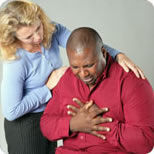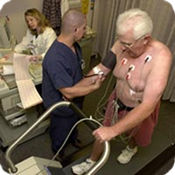
Click to read: I Had My Cardiac Enzymes Measured: A Case Study - What Does a Thallium Stress Test Involve?
What is a heart attack?
Most heart attacks are a result of coronary heart disease – the narrowing of the coronary arteries due to a gradual build-up of fatty material within their walls. This fatty material is called atheroma.
